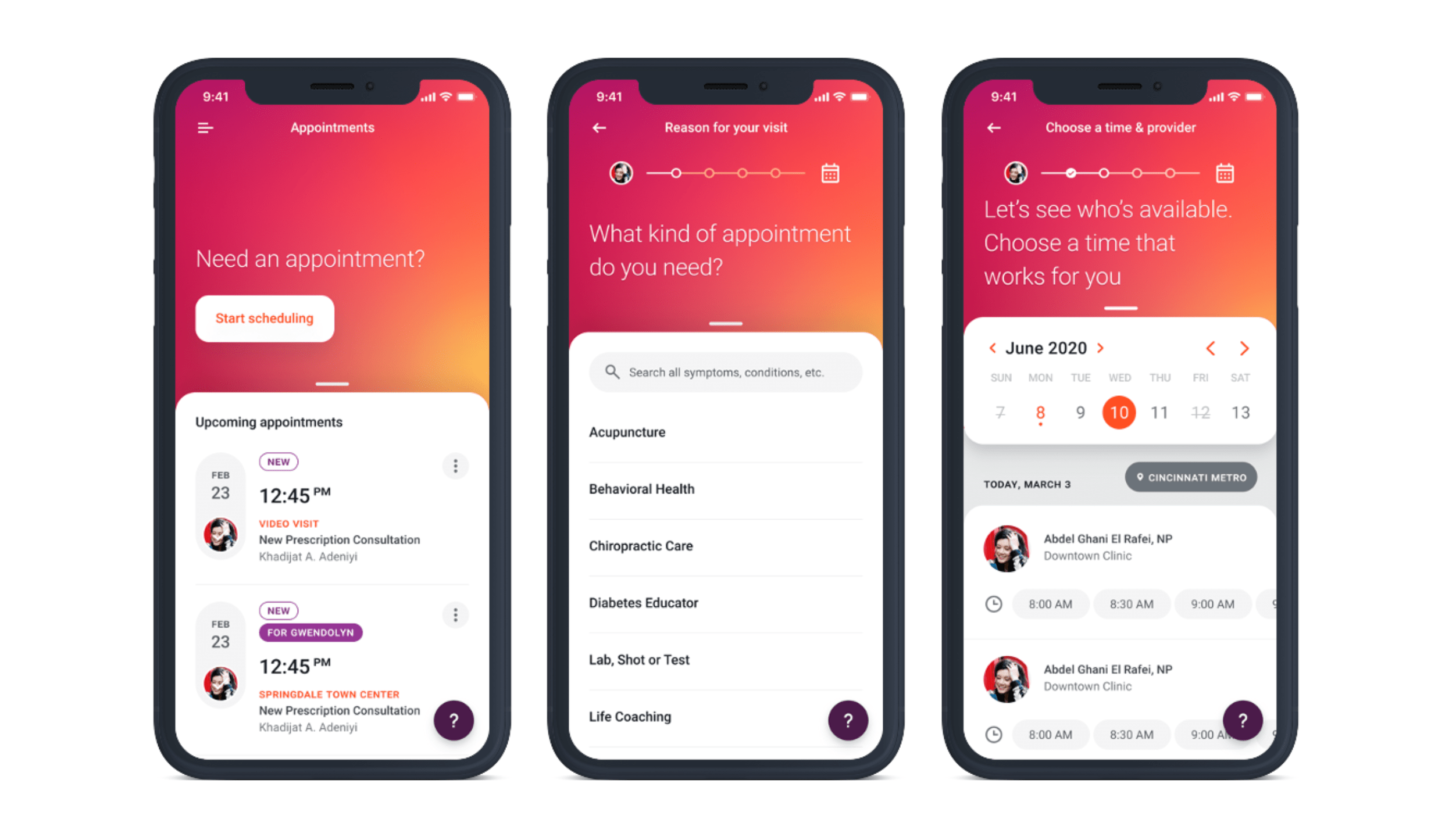Healthcare Services Provider
Modernized virtual care program drives patient engagement and generates an estimated $216 million in new revenue
Our Impact
An onsite primary care provider was on a mission to improve the well-being of the population it served. One way to achieve this goal was by helping patients save on medical expenses through a modern mobile user experience. They understood that higher engagement would lead to better preventative care and improve patient adherence to treatment plans.
To meaningfully impact its population, this healthcare provider had three main objectives: consolidate technology, increase patient engagement, and strengthen its brand. West Monroe had a history of successful projects with the provider. We designed and built new mobile apps for iOS and Android and a virtual care offering that provides comprehensive care for our client’s patient population.
400K
more people served through comprehensive virtual care
$216M
in estimated new revenue
$2,000
in annual savings for each engaged employee
The Full Story
The Challenge
Developing a unified digital experience following a major healthcare merger is no small feat. The pressure to deliver quality healthcare and meet growing demand for virtual care options was further complicated by the COVID-19 pandemic and the need to converge numerous business processes and back-end systems. Our client was able to face these challenges head-on with the help of our expert support and a sustainable product roadmap.
We employed an agile approach, working in sprints to ideate, design, and build a new user experience that balanced speed and collaboration. A multidisciplinary team of product managers, engineers, creatives, IT specialists, health and life science experts, and legal professionals informed our steering committee and established functional operating models. Our objective was not simply to add features, but to establish the foundation for a better mobile app and a transformed digital operating model.
An Undeniably Different Approach
At West Monroe, our digital experience has taught us that a company’s mindset and culture towards digital products are as crucial as their capabilities. So, in addition to addressing the technical aspects of the project, we introduced new ways of thinking and communicating about new products and executing their corresponding strategies. This process required a significant amount of coordination across various departments, each with its own unique systems, processes, and culture. Adopting a product mindset provided the organizational agility to continuously learn from and adapt to the converging operating models. Our goal was to help our client navigate the complexities of a rapid transformation and emerge as a leader in delivering digital healthcare solutions.
The shift in mindset transformed the healthcare organization’s perspective on digital experiences. They recognized that digital experiences are not just an IT issue but rather a result of cross-functional collaboration. Following our recommendations and observing our multidisciplinary teams in action, the client established a product function to enable cross-functional decision-making. This approach allowed teams to collaborate directly on major digital integrations, rather than having decisions dictated solely by executive leadership.
Our diverse teams enabled our client to transform quickly while delivering measurable value. Here are three ways our multidisciplinary teams made this possible:
- Our PXEL product team—consisting of product managers, engineers, designers, and copywriters — helped our client build a new user experience while ensuring compatibility with their back-end technology.
- Our HLS experts were instrumental in setting up workstreams, forming a steering committee, and defining operating models. They also established a LEAN governance model where representatives could bring forward potential risks and action items.
- Our mergers and acquisitions team assessed our client’s organizational readiness and created an overarching plan prior to the engagement.
We took a comprehensive approach to digital, considering the converging systems, shifting mindsets, value creation opportunities, and technical capabilities of our client. By doing so, we assisted the healthcare provider in developing a mobile app to enhance patient engagement and a virtual care system that offers high-quality care from anywhere.
Real Results
Our client aimed to increase patient engagement and the results were impressive. The new mobile app received high scores, ranging from 96-98%, for ease of sign-in, scheduling, and if patients would recommend the application to others. The 1.0 release of the virtual care product would also help them serve an estimated 400,000 more people—further increasing patient engagement.
Another objective was to reduce medical expenses and generate new revenue. The new virtual care platform is estimated to save each engaged employee up to $2,000 annually, and the virtual care launch is estimated to generate a significant $216M in new revenue.


.png?cx=0.5&cy=0.5&cw=768&ch=432&hash=8B42DD0A359FBFC9443564BC6589F22A)














.png?mw=400&mh=100&iar=0&as=1&hash=260C0990E70BE5751B20C6B85D9310F3)